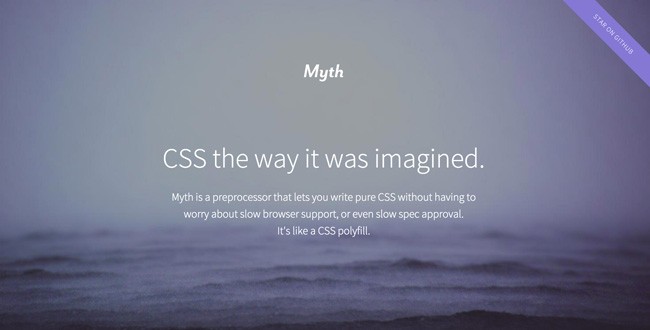Myth CSS preprocessor
Wednesday, January 20th, 2016 | Programming, Tech

Myth is a CSS preprocessor that allows you to write easier-to-manage CSS, similar to LESS and SASS. The difference with Myth though is that you are writing “pure CSS” while still using features that will be available in the future (such as variables and maths). It then acts as a polyfill for browsers that do not support it.
You can see the full spec on the Myth website.
Should you use it instead of LESS and SASS? In my opinion, no. Not yet anyway. While it does offer some of the features, it does not offer the really useful ones yet. Nested roles and mixins are the big winners for me. Myth does not have these. Nor does it support includes.
It’s one advantage is that it does fill in prefixes. So if you are using flexbox, you can just have a flexbox entry, rather than the endless series of browser-targetted prefixed flexbox commands you currently have to use. You can do this using mixins in LESS and SASS, but it is messier than the way Myth implements it, where you just type the standardised CSS property.
While possibly not that useful right now, Myth is one to watch for the future.

Myth is a CSS preprocessor that allows you to write easier-to-manage CSS, similar to LESS and SASS. The difference with Myth though is that you are writing “pure CSS” while still using features that will be available in the future (such as variables and maths). It then acts as a polyfill for browsers that do not support it.
You can see the full spec on the Myth website.
Should you use it instead of LESS and SASS? In my opinion, no. Not yet anyway. While it does offer some of the features, it does not offer the really useful ones yet. Nested roles and mixins are the big winners for me. Myth does not have these. Nor does it support includes.
It’s one advantage is that it does fill in prefixes. So if you are using flexbox, you can just have a flexbox entry, rather than the endless series of browser-targetted prefixed flexbox commands you currently have to use. You can do this using mixins in LESS and SASS, but it is messier than the way Myth implements it, where you just type the standardised CSS property.
While possibly not that useful right now, Myth is one to watch for the future.